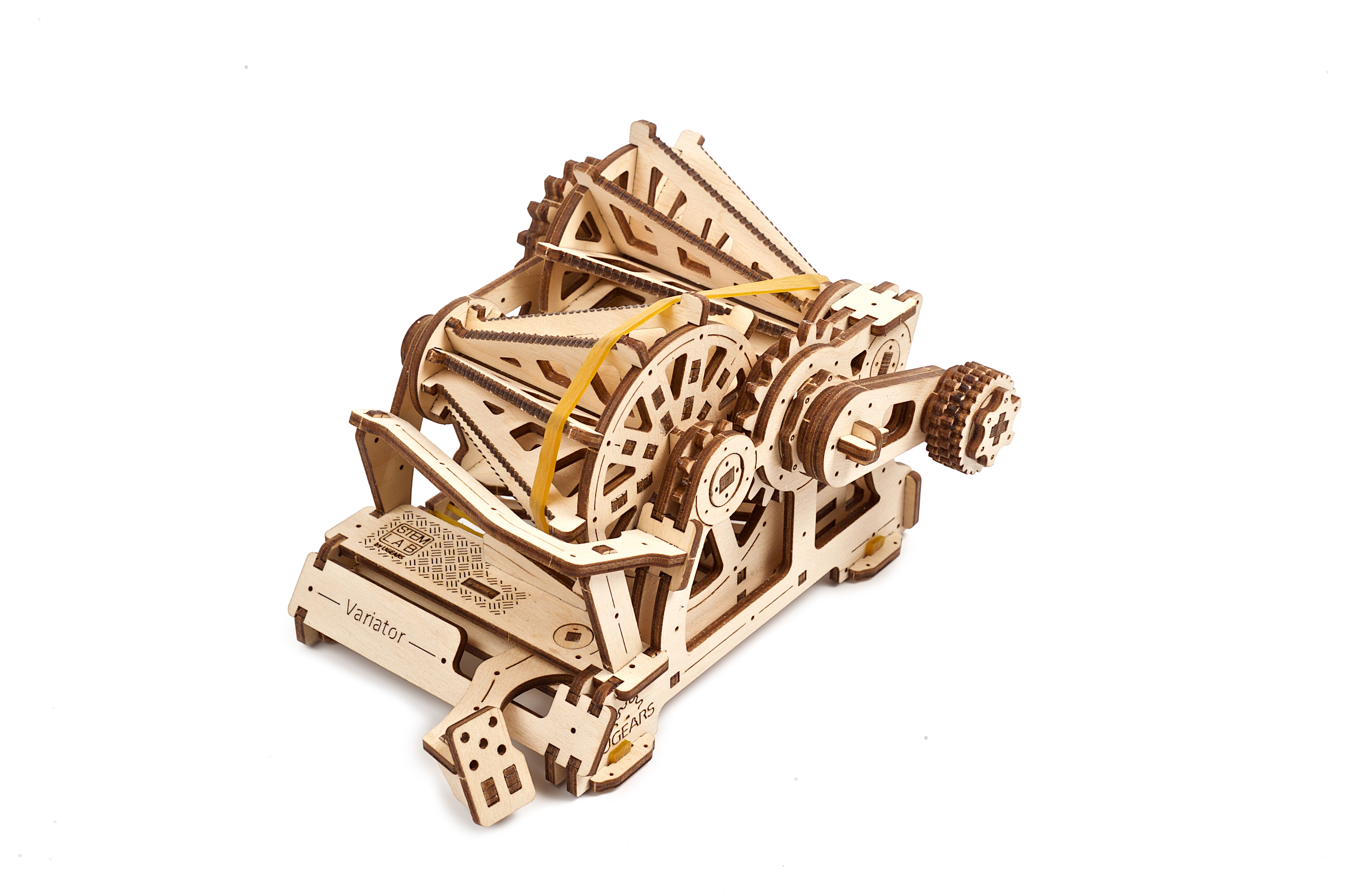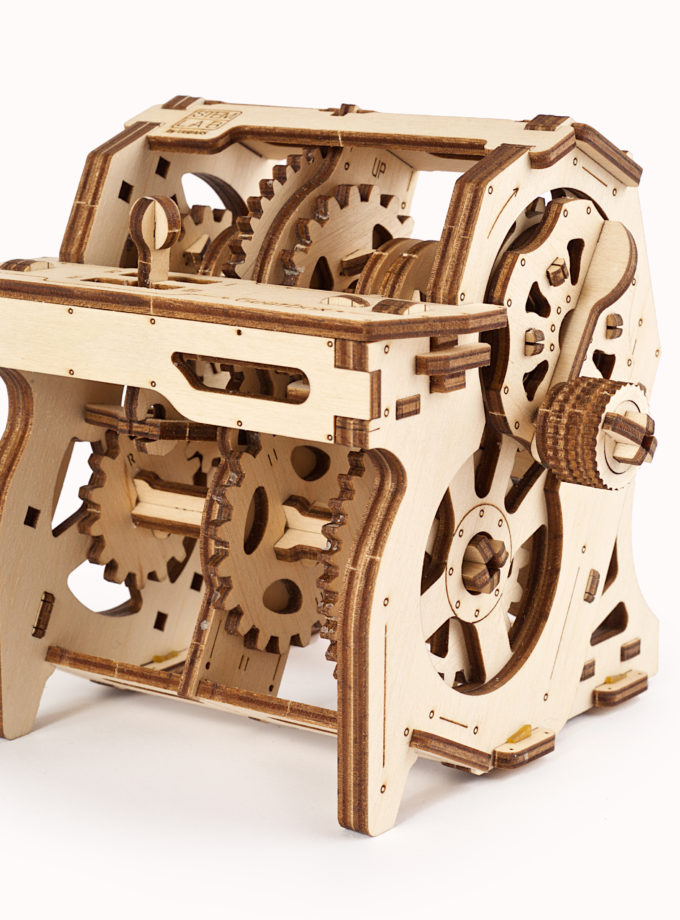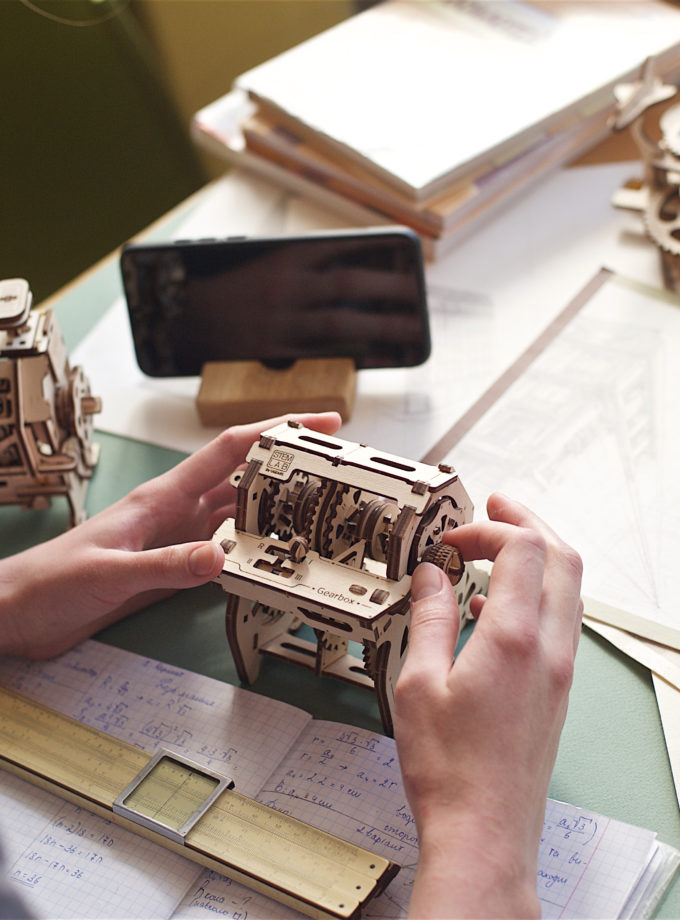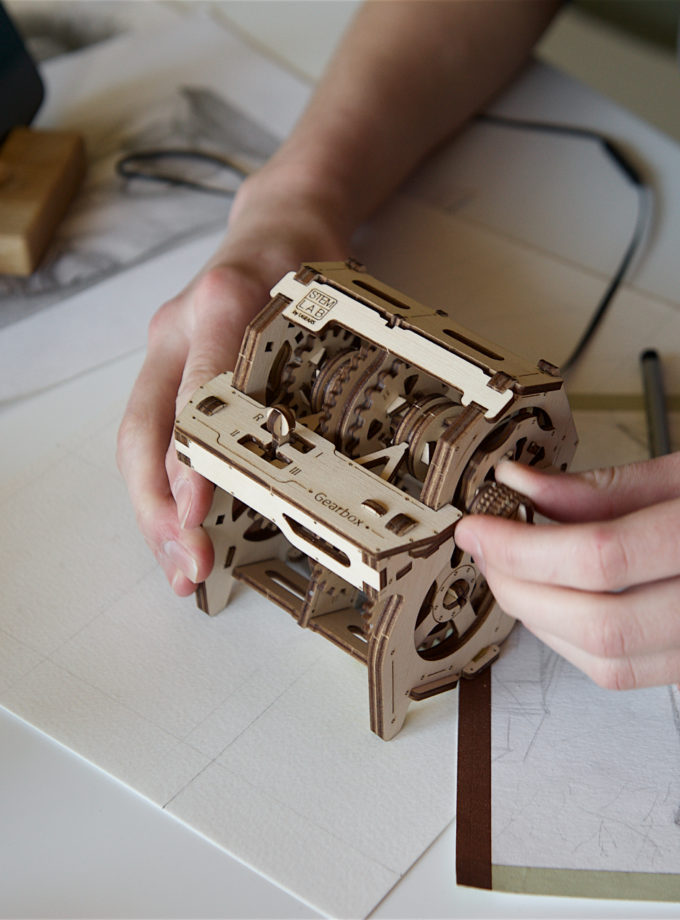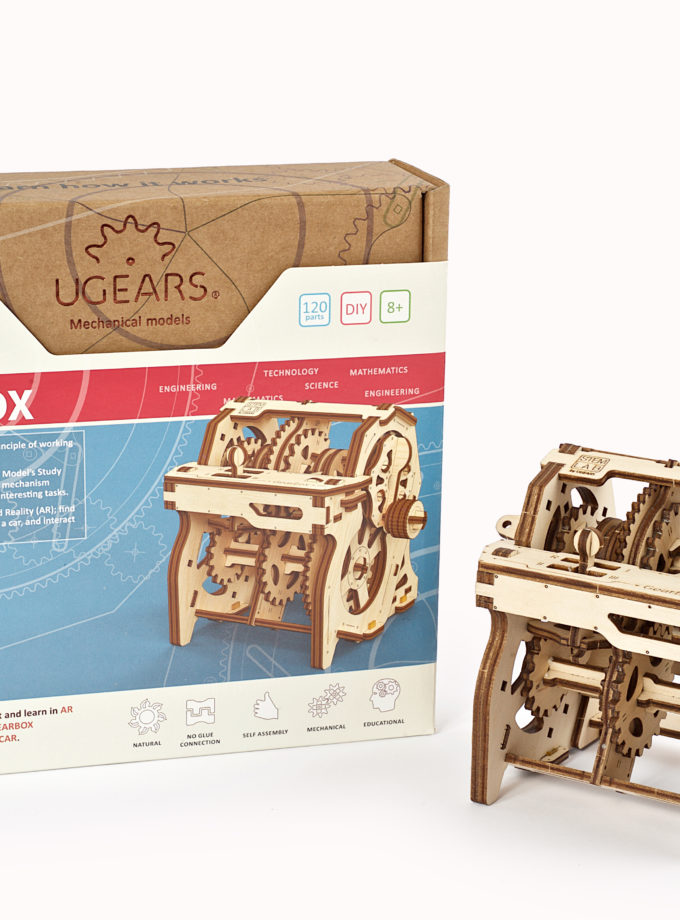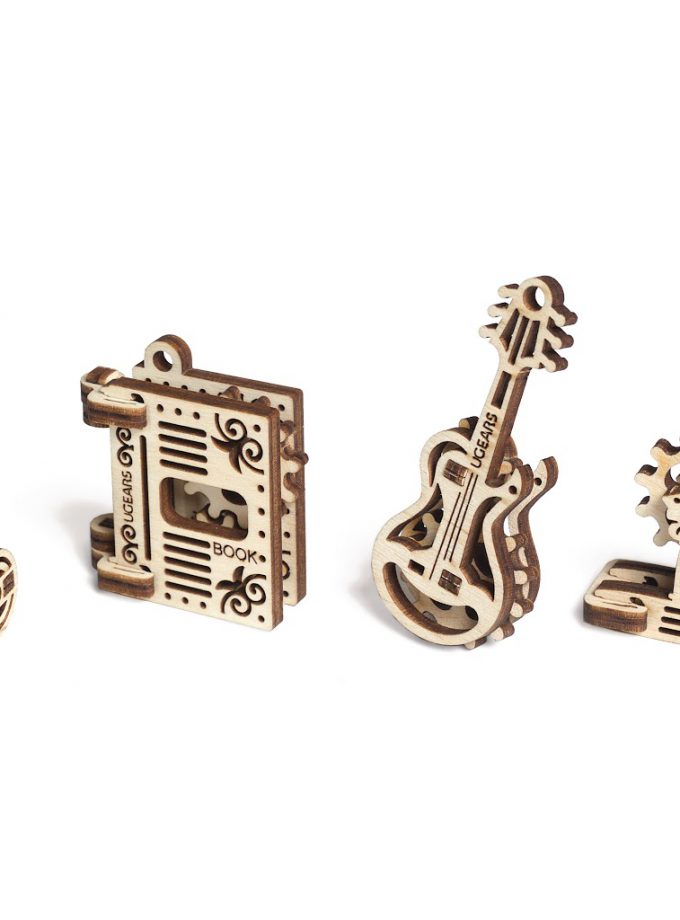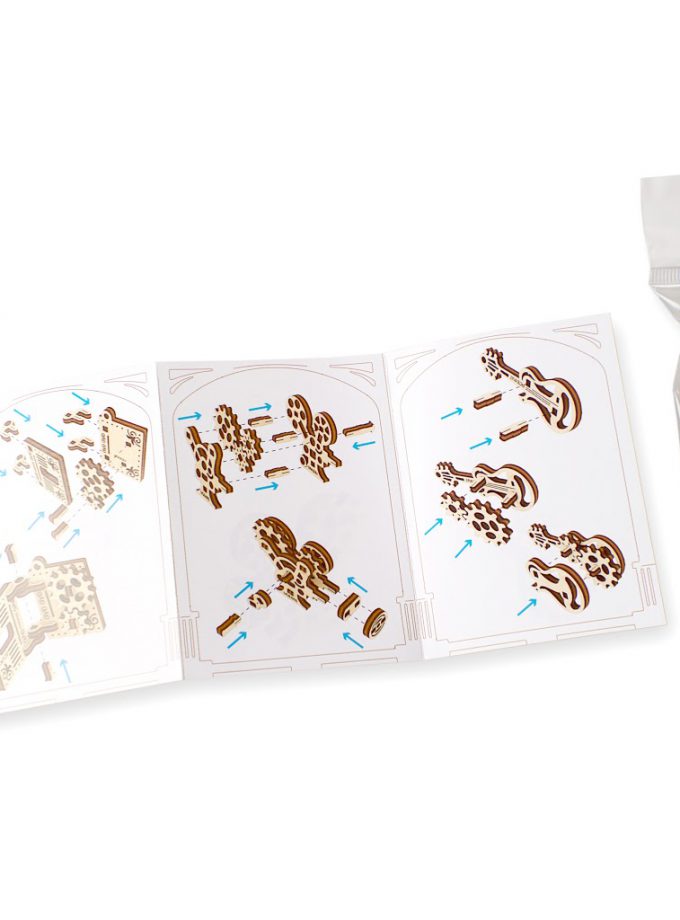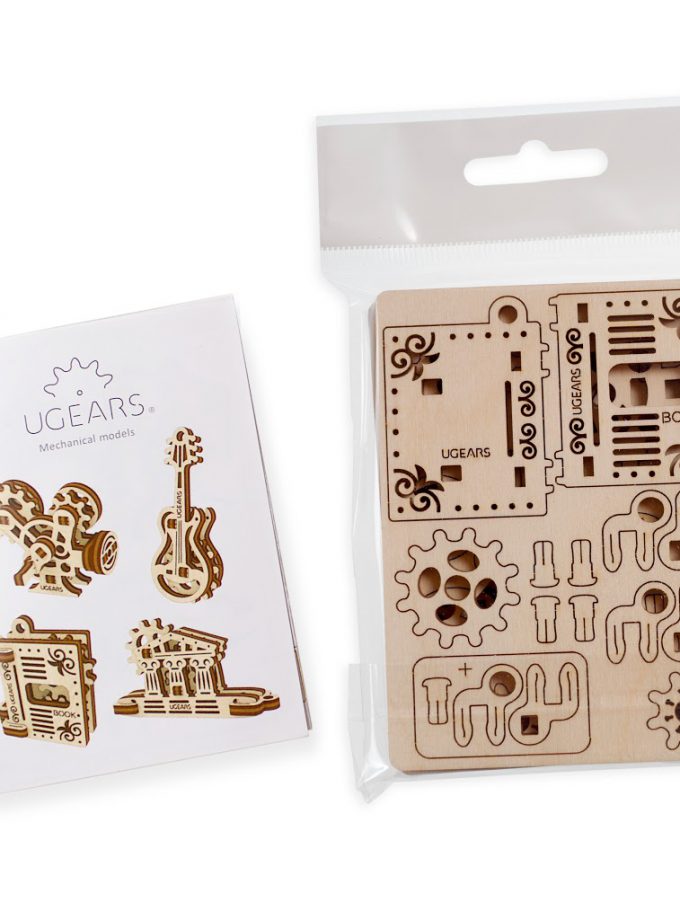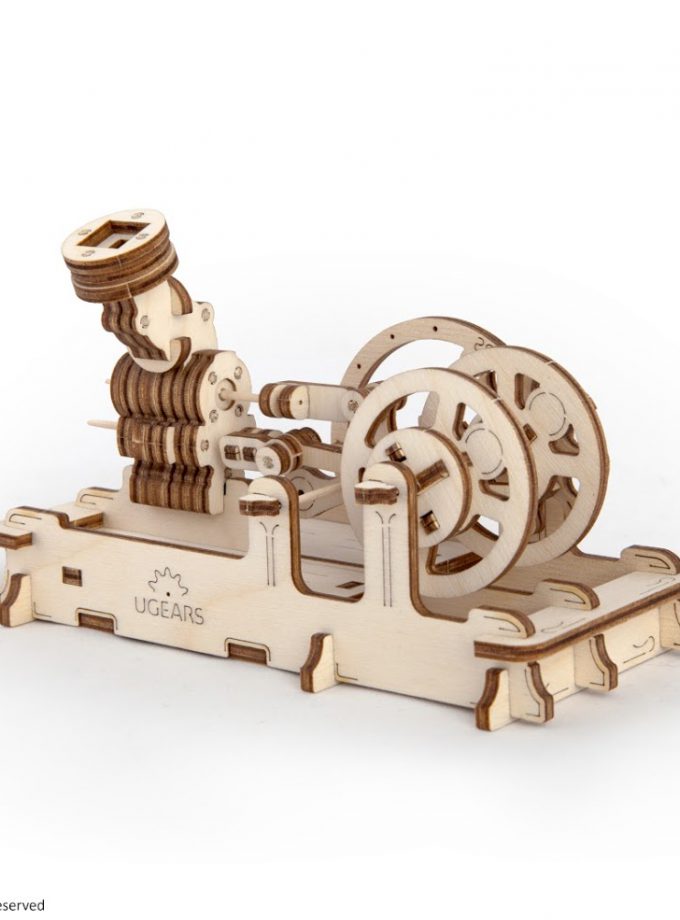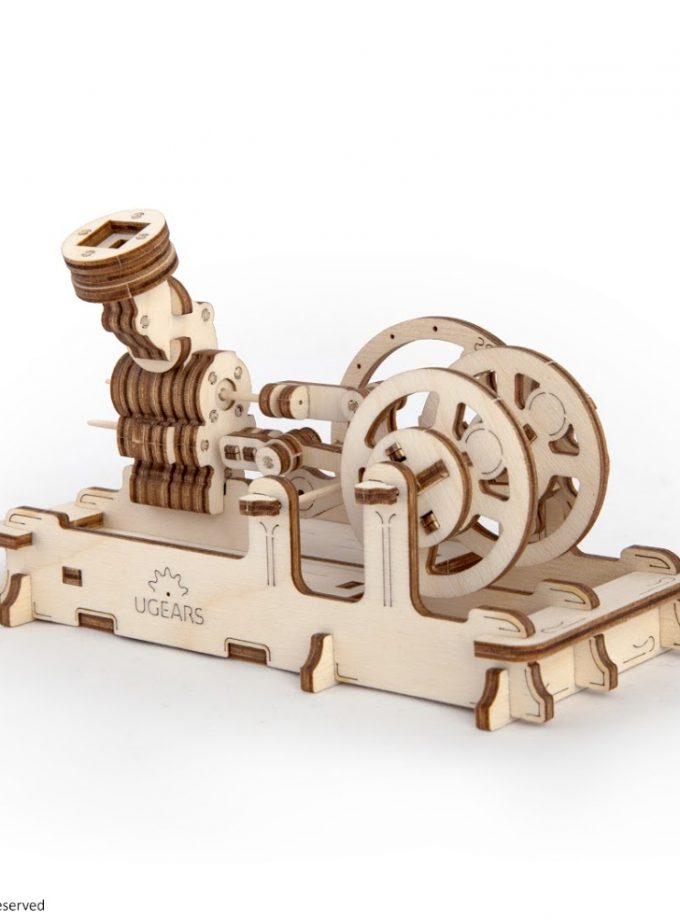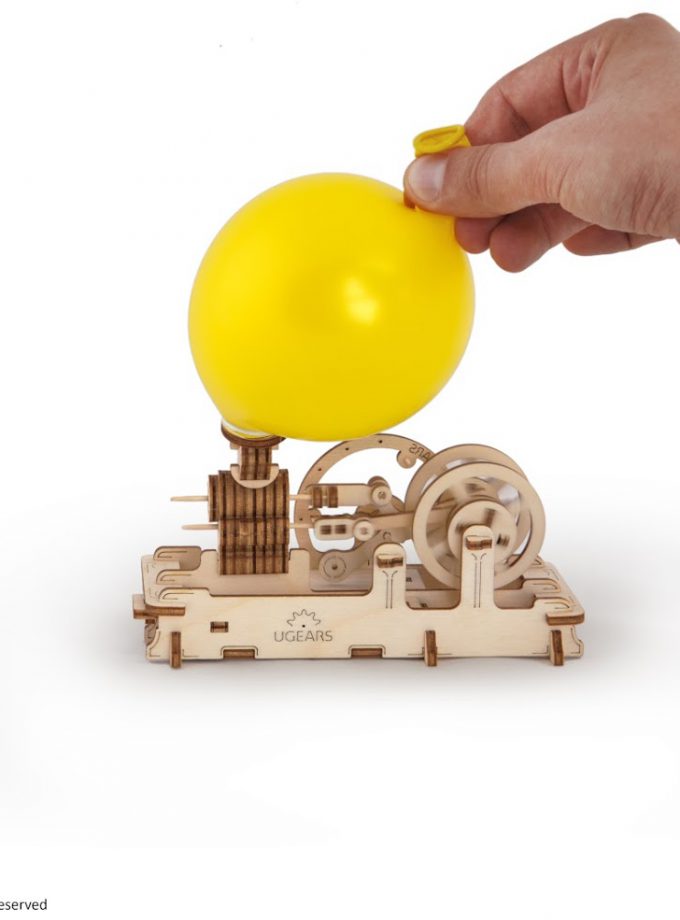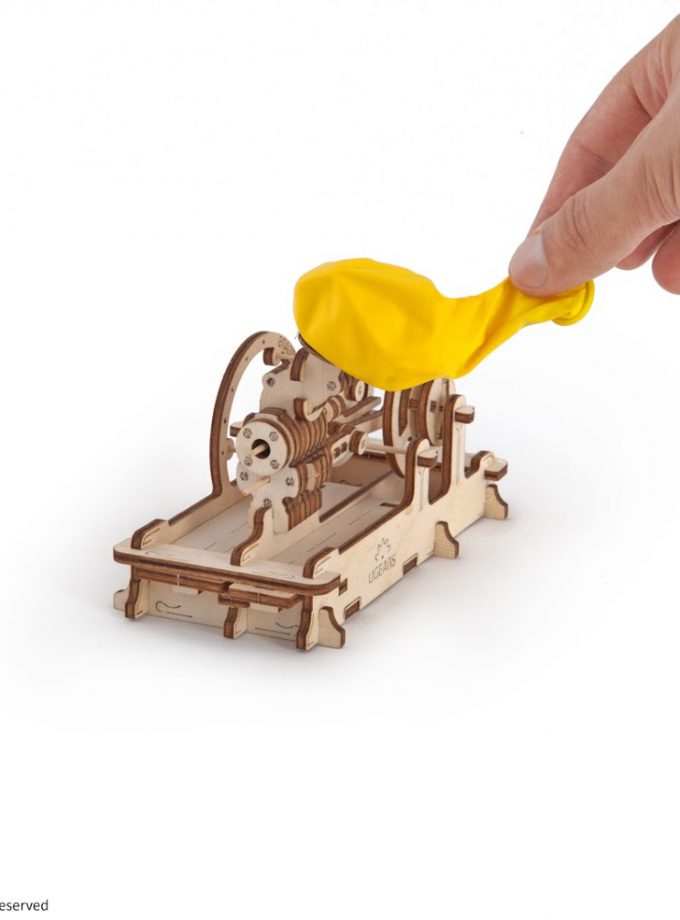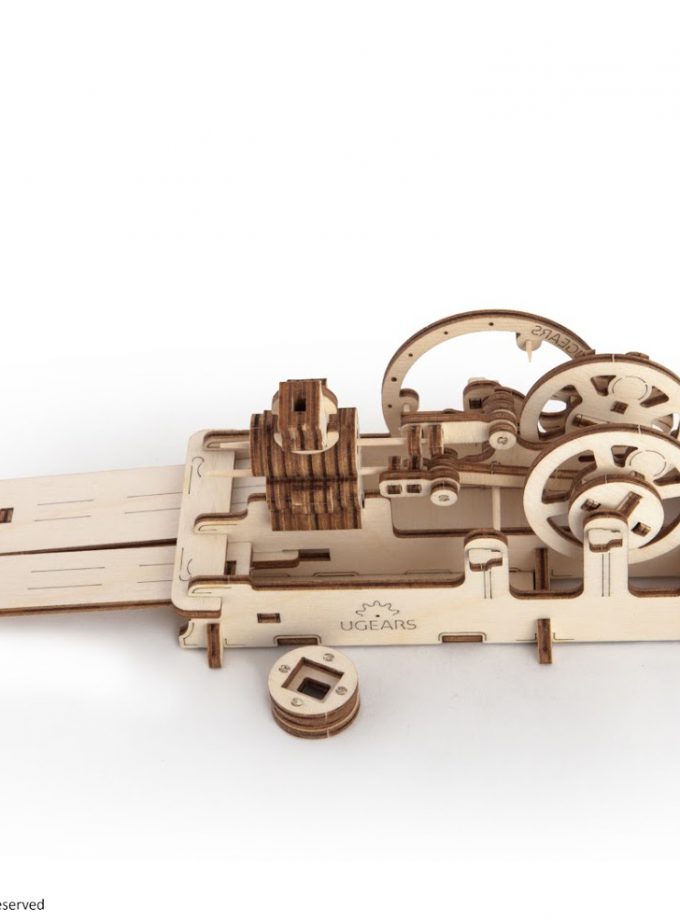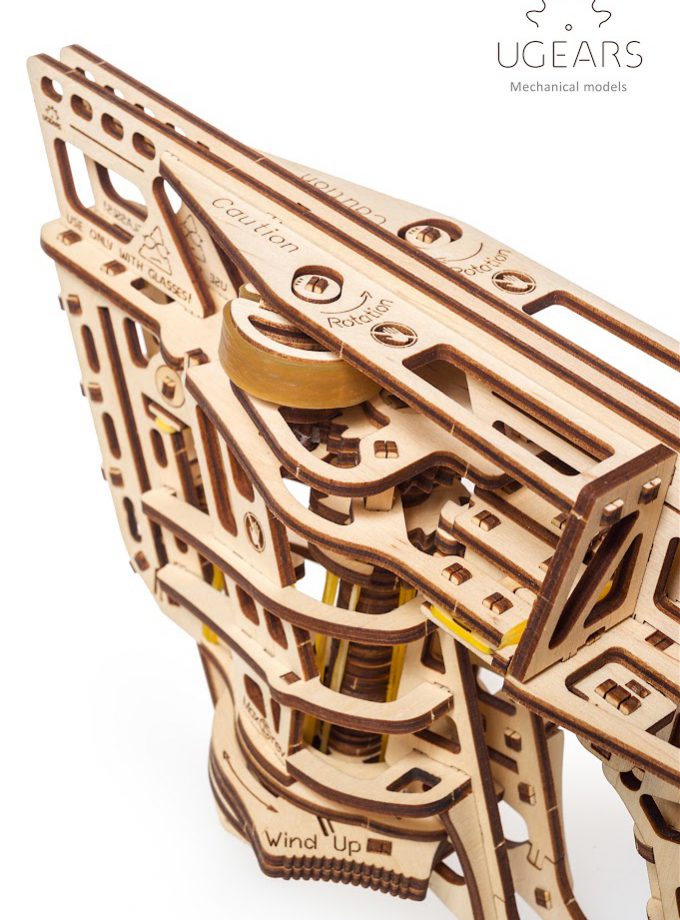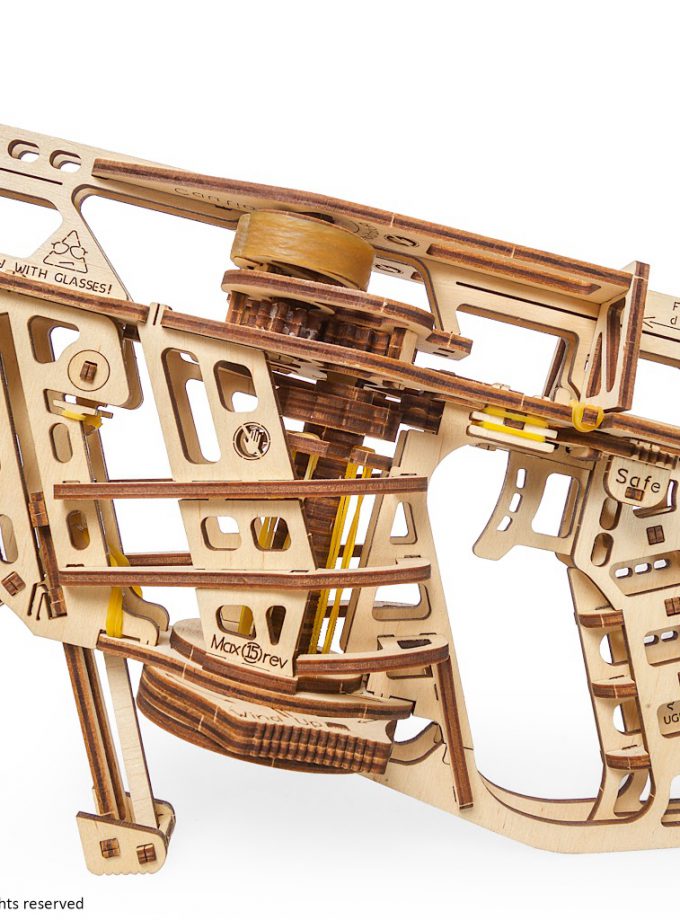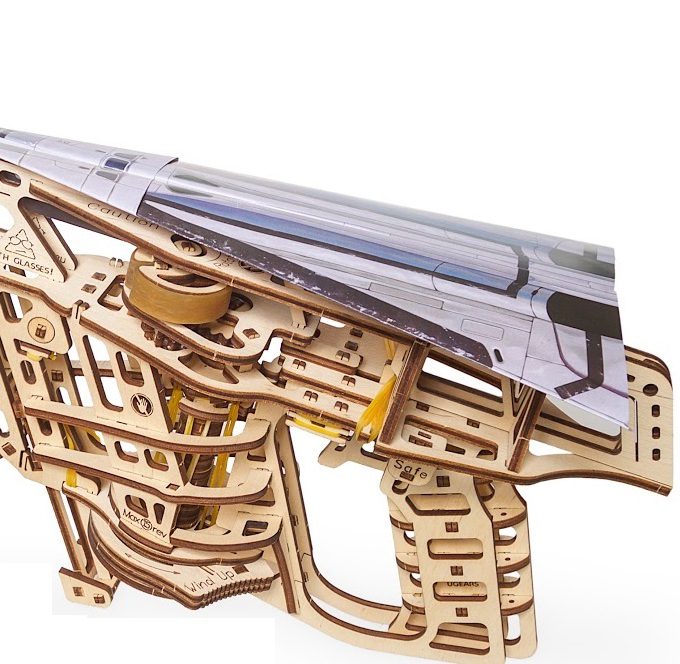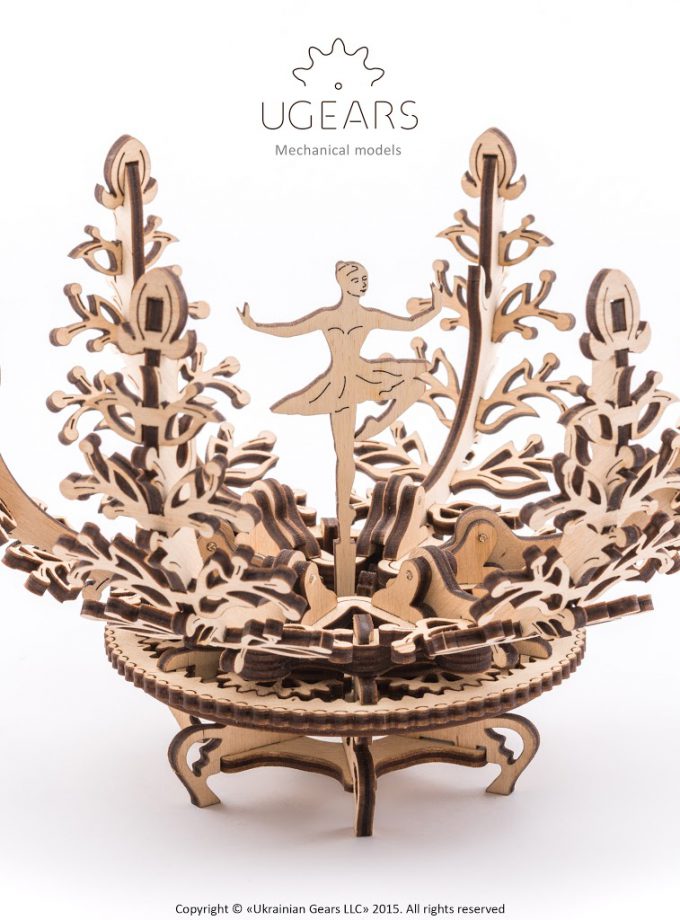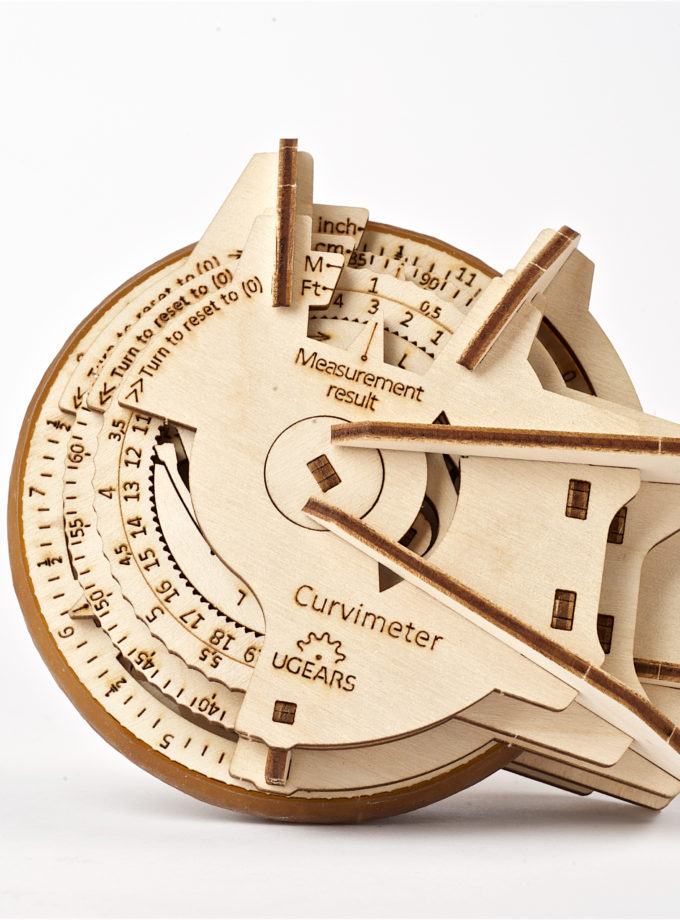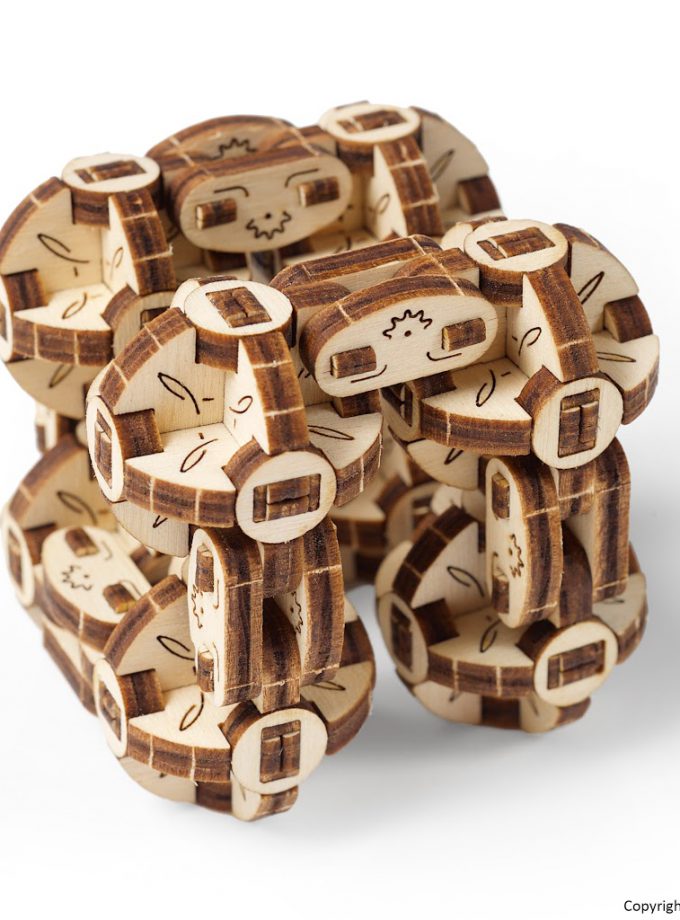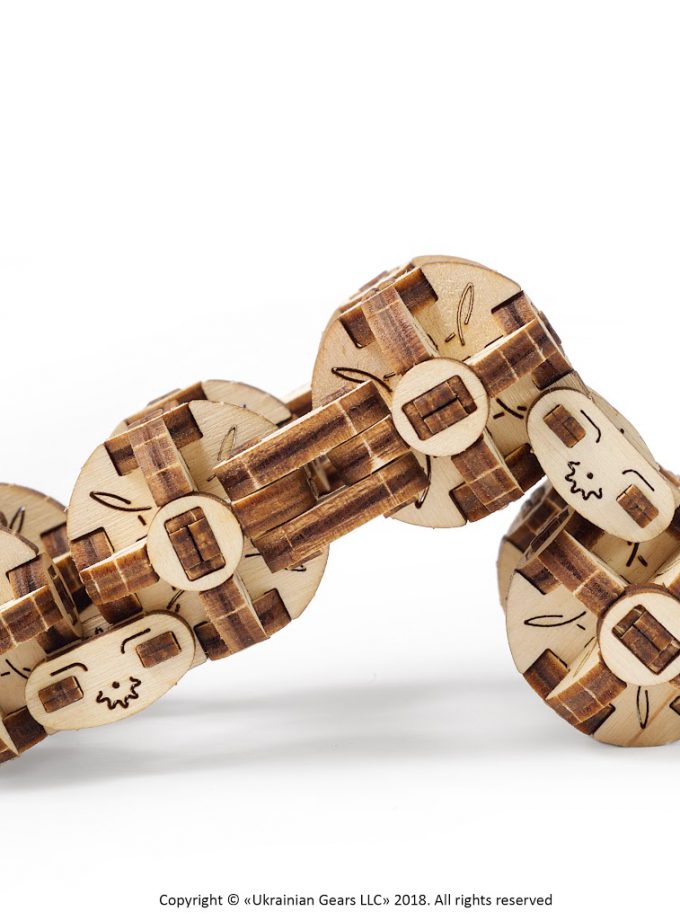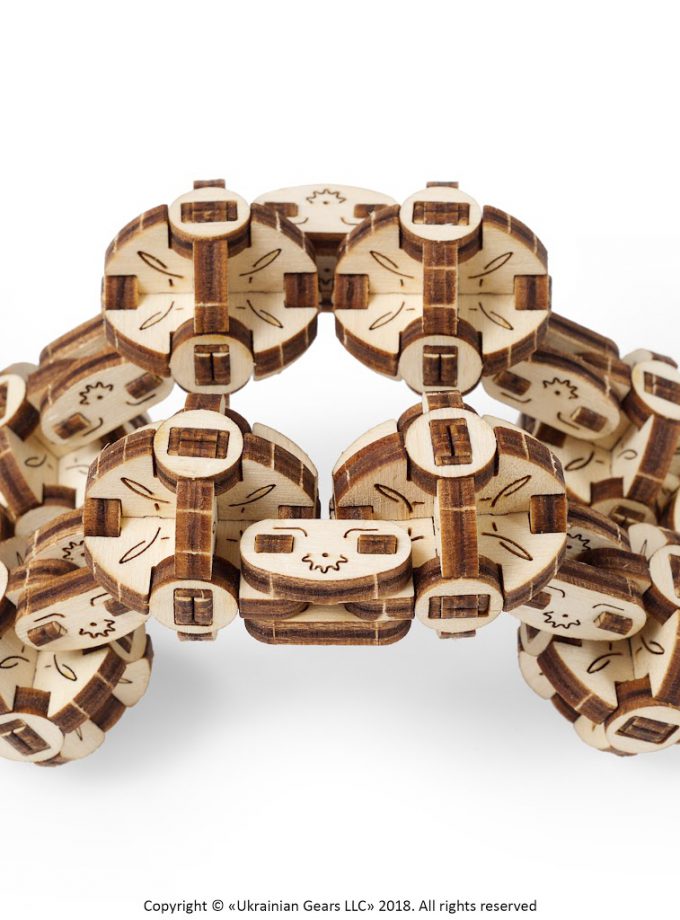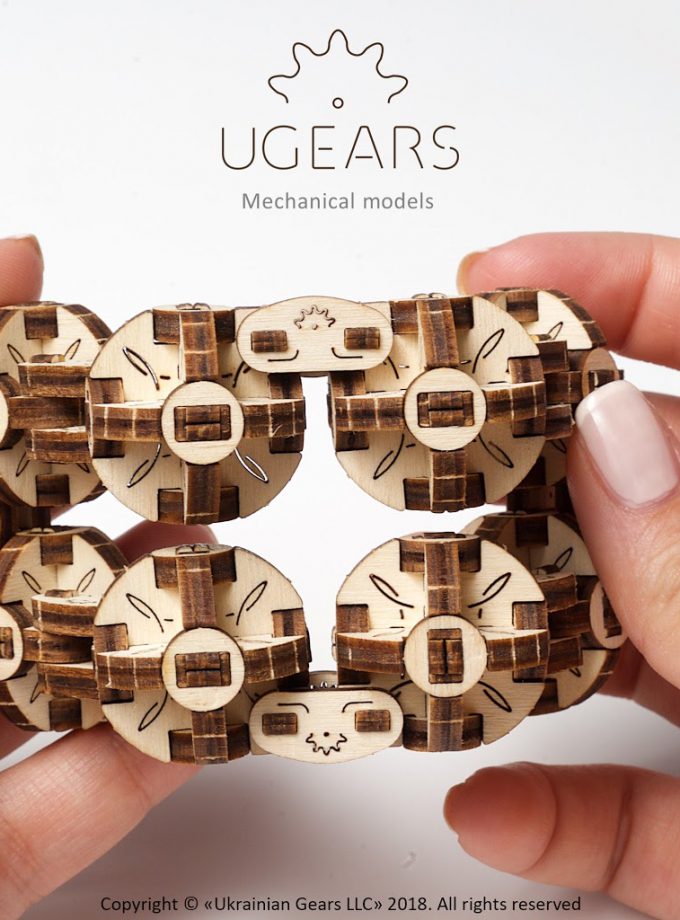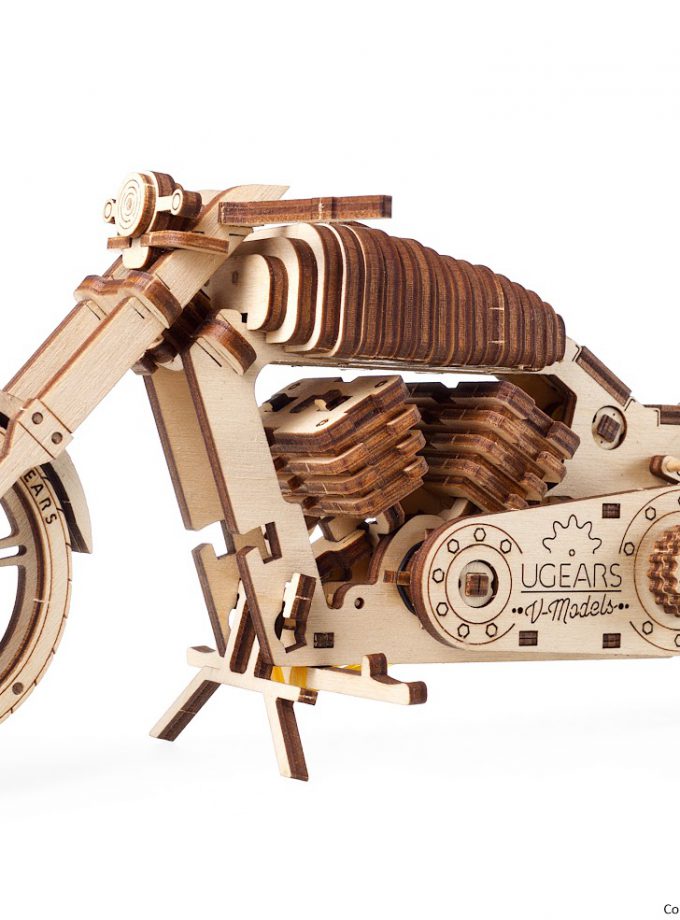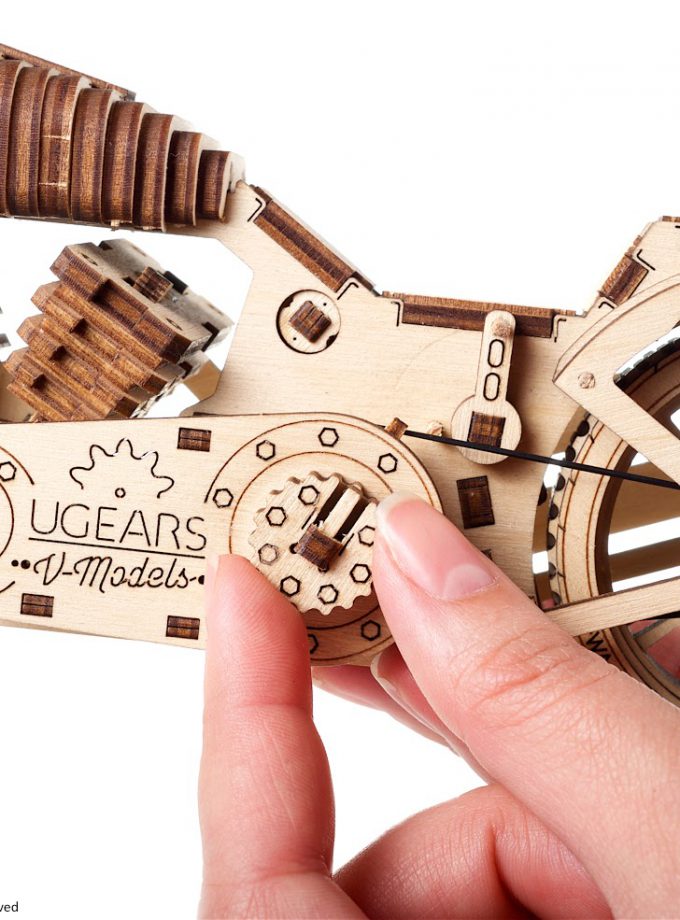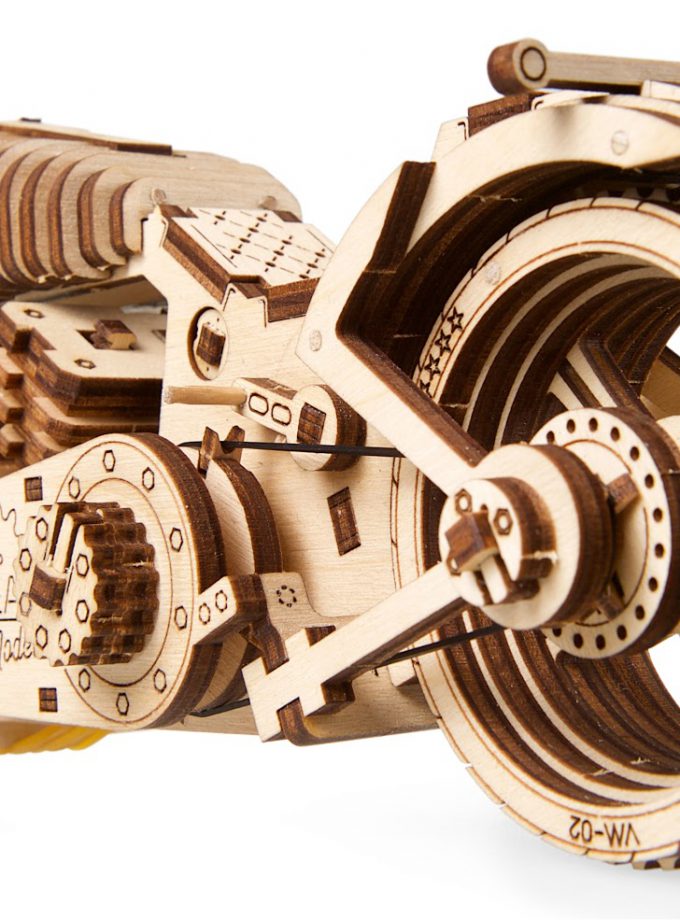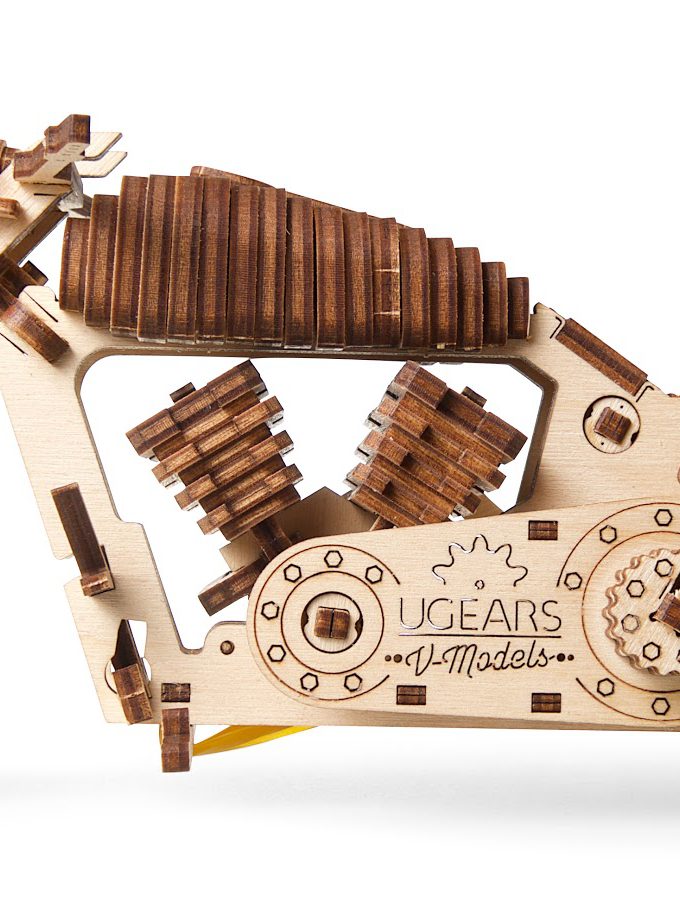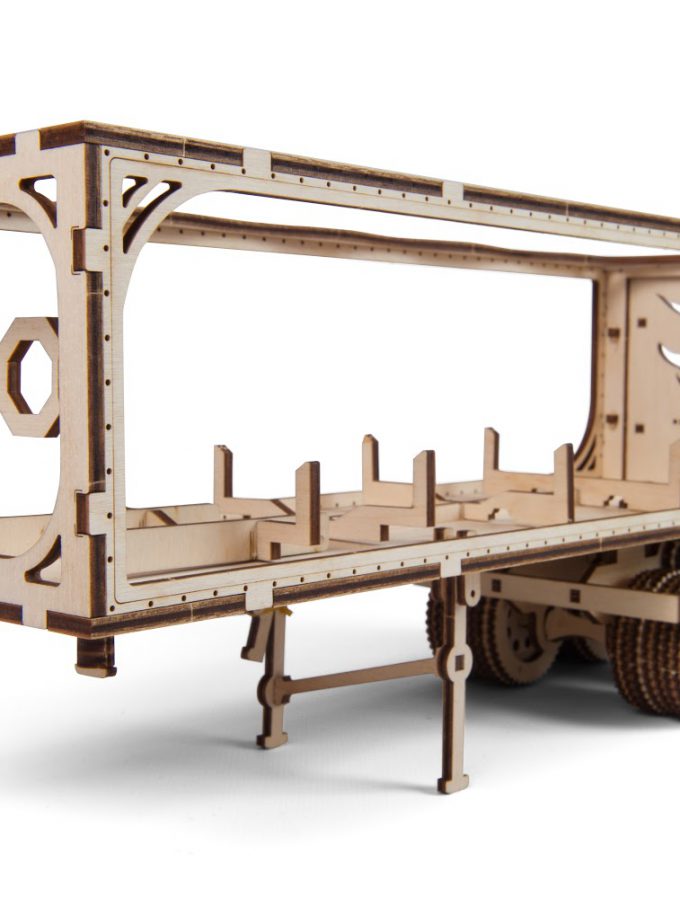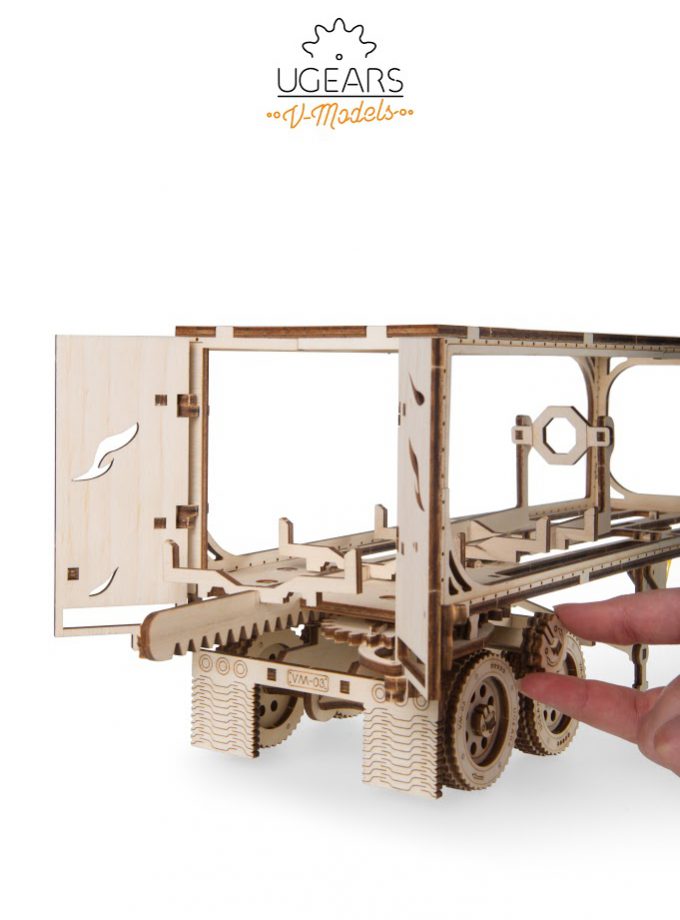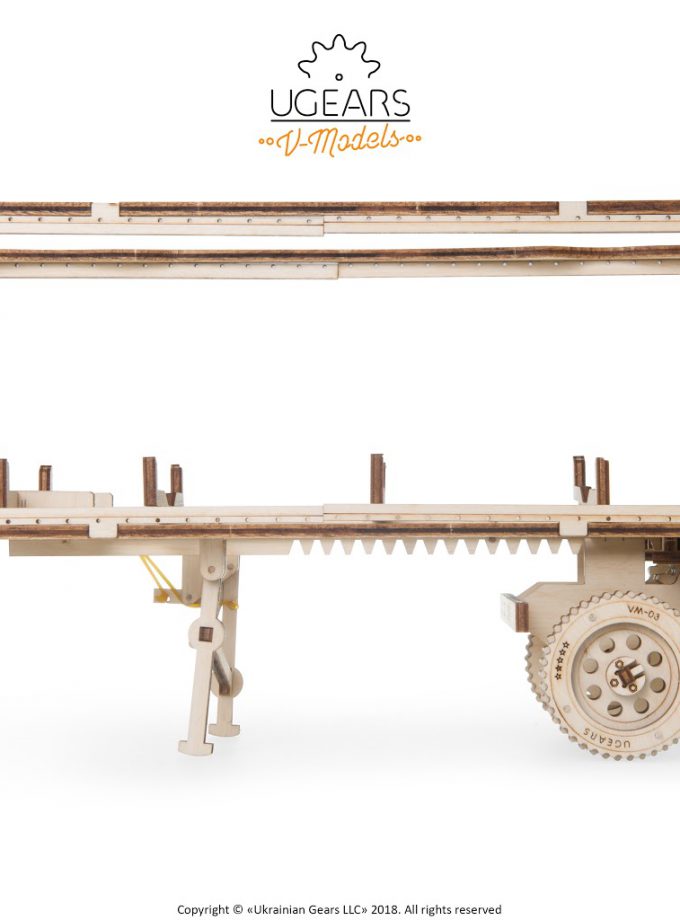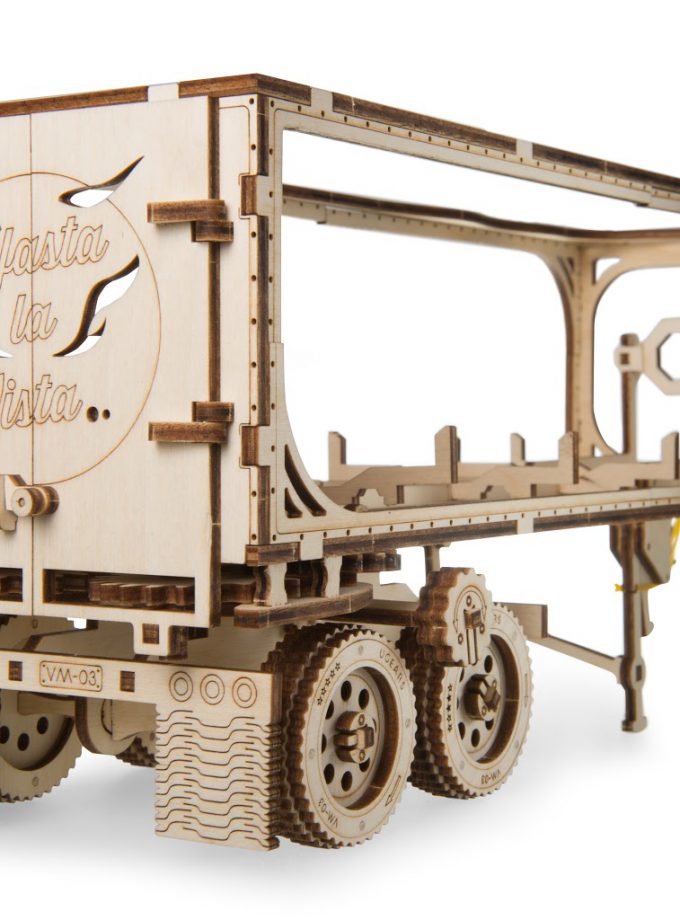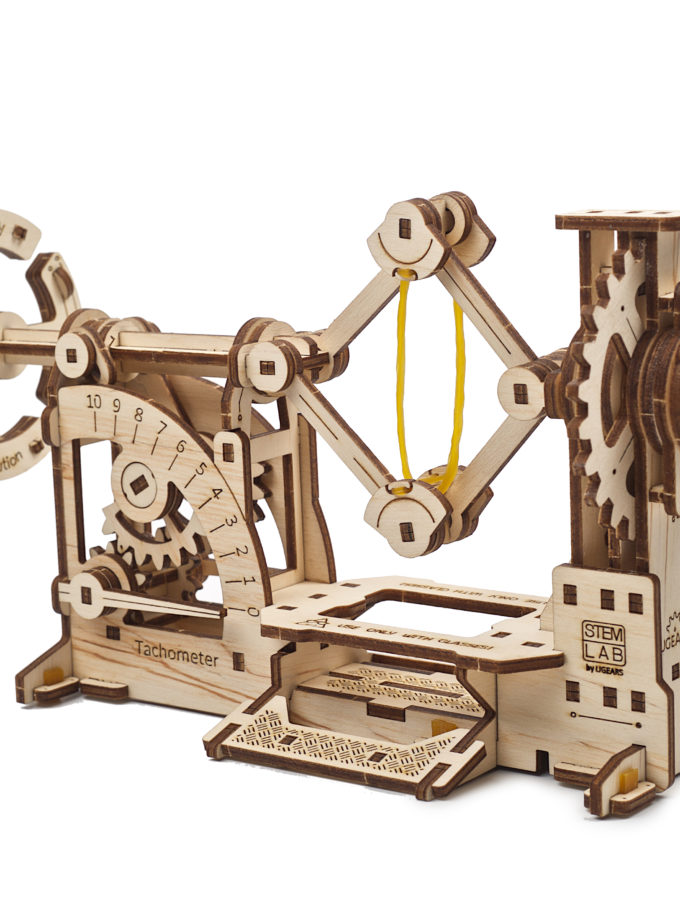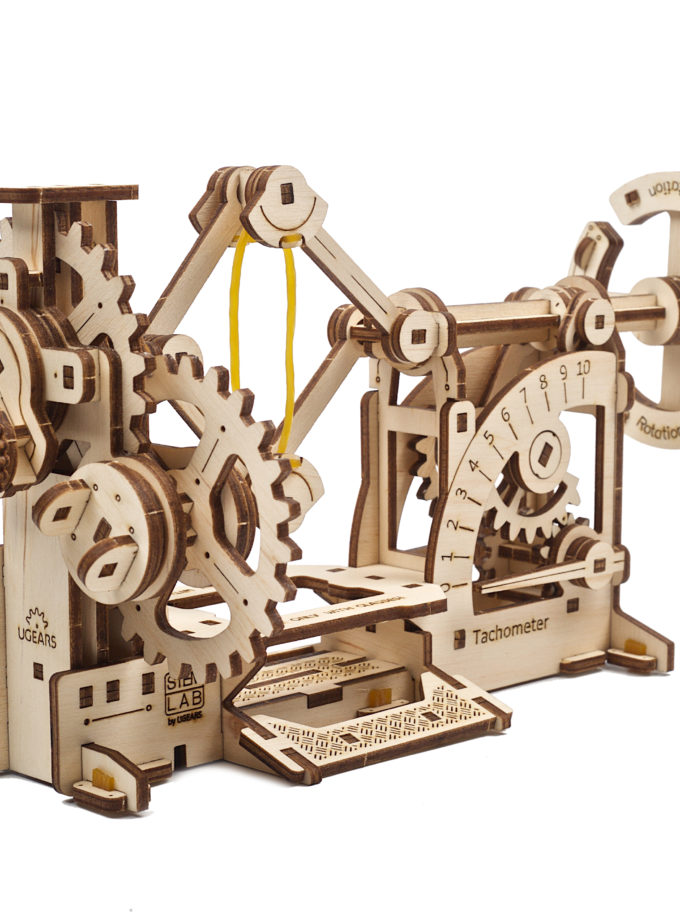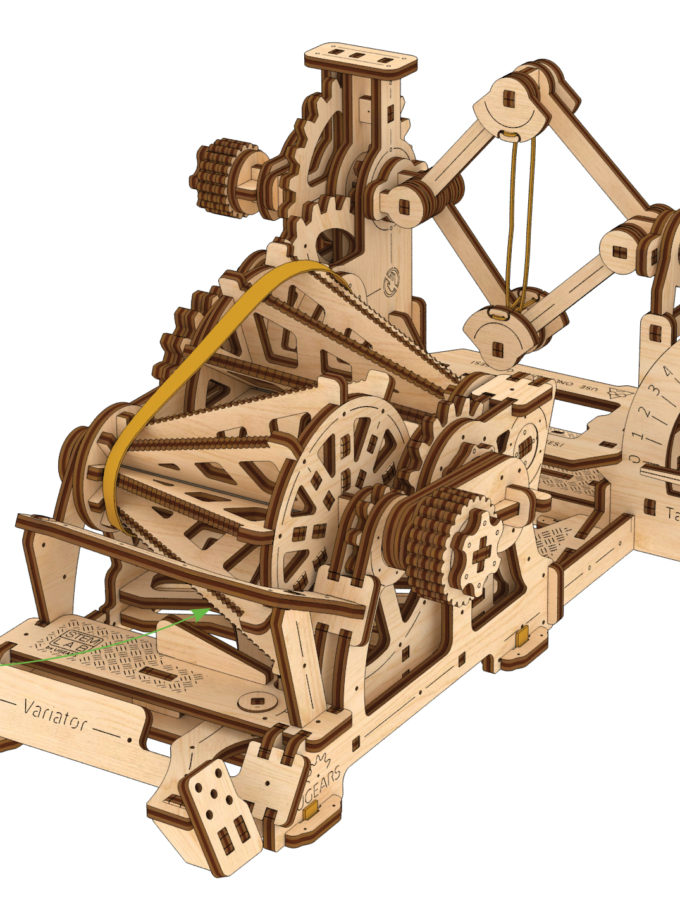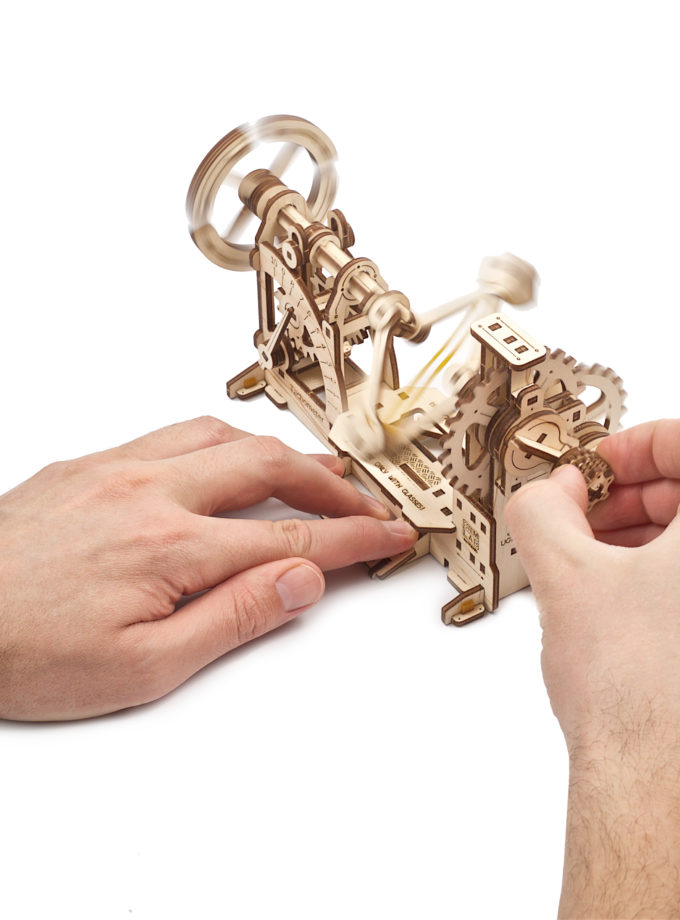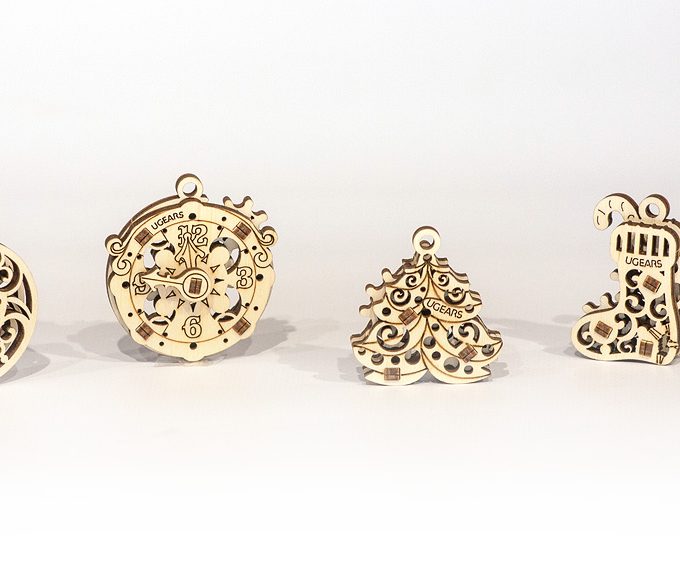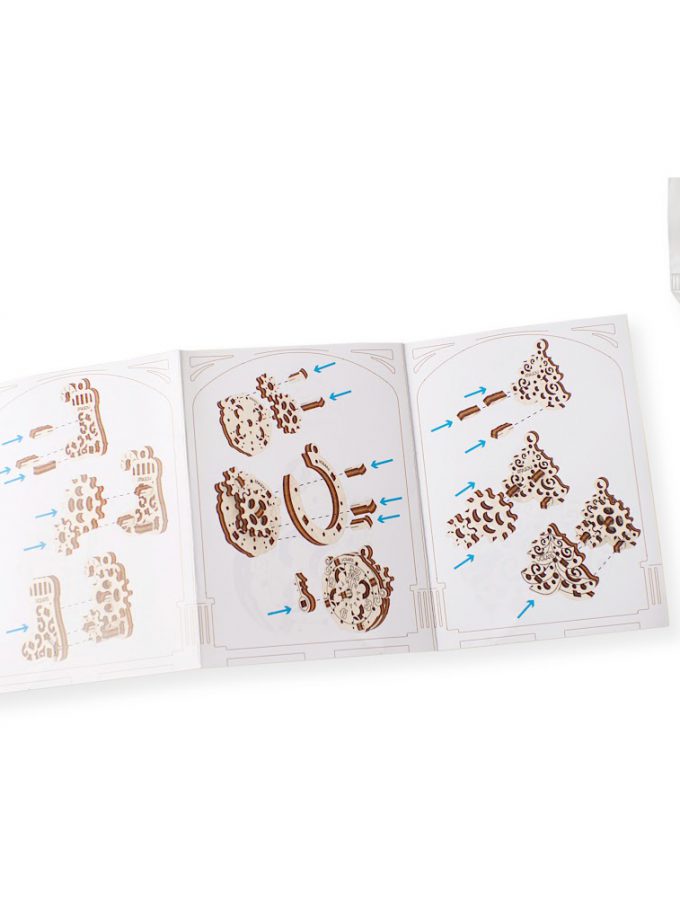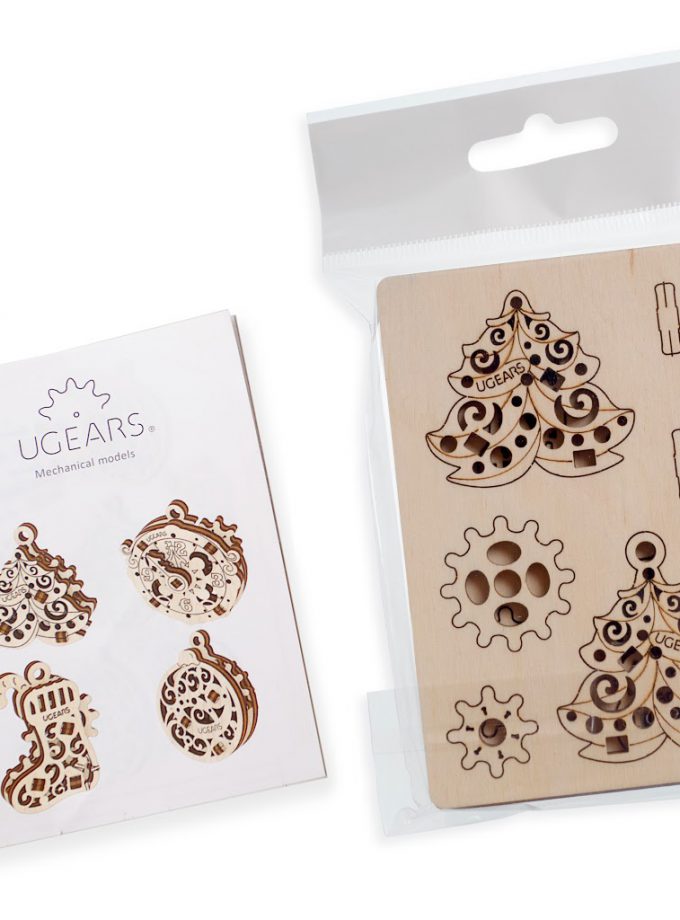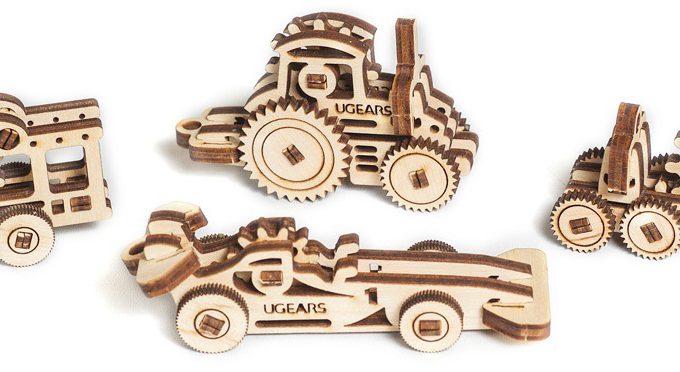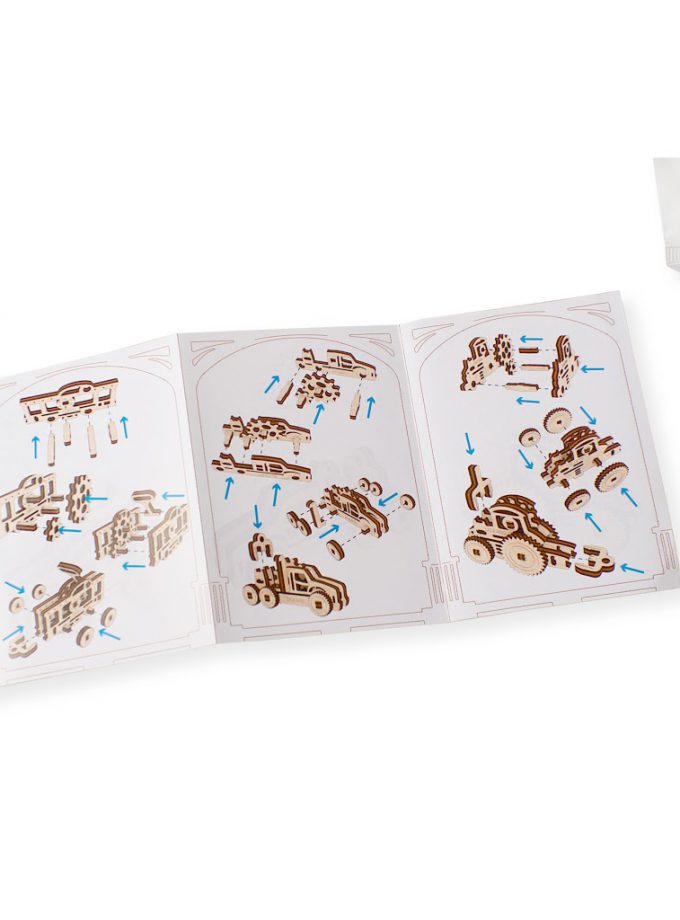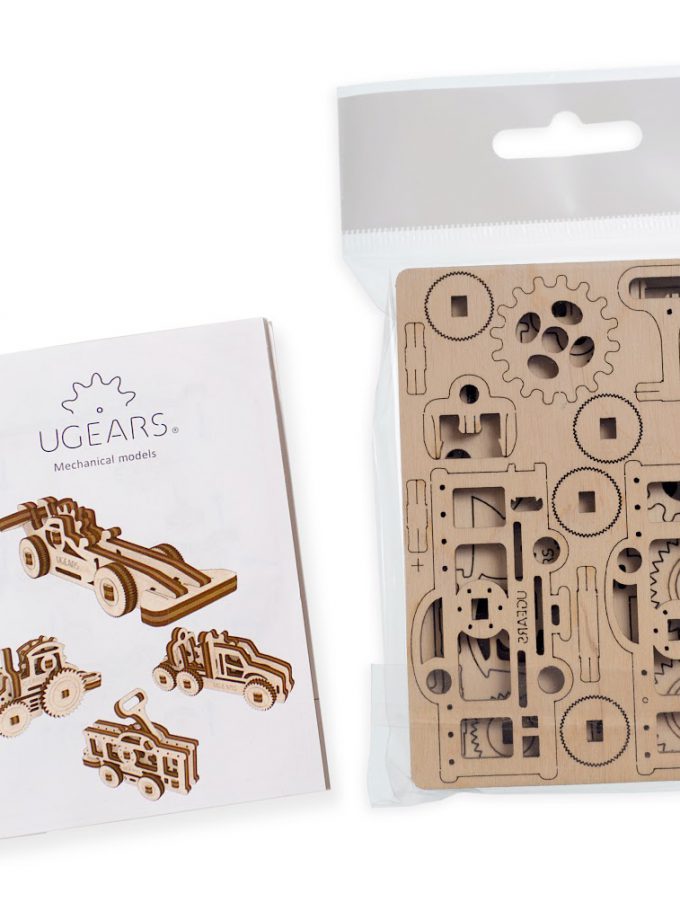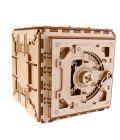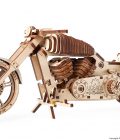Assemble it and discover the drive’s operating principle.
● The model kit comes with a QR-code that will transmit you to the learning guide on the mechanism, the principle of its operation, key features, formulas and interesting missions.
● Dive into augmented reality and see how it works Interact with the model via a special AR app from Ugears.
The variator is a device that transfers and adjusts motor torque by changing the gear ratio. The gear ratio can be changed automatically, manually or according to a preset program. The term most drivers and car enthusiasts are most familiar with is continuously variable transmission, or CVT. With the Ugears Variator model from the STEM lab collection, you can learn and understand one of the most important parts of a car without getting your hands dirty with machine oil!
Who invented the variator and when?
The roots of the CVT in modern cars go back to 1879, when an American entrepreneur and automotive pioneer, Milton Othello Reeves, invented a device for use in sawmills, which he then called a variable-speed transmission. He later began equipping his cars with this transmission. Reeves’ CVT was also used by several other manufacturers.
Application:
The CVT is used in mechanisms in which a continuous range of gear ratios needs to be changed smoothly: cars, scooters, snowmobiles, quadricycles, conveyors, metal-cutting machines, etc. To get a better idea of how it’s used in different types of equipment, try out the AR application that accompanies the Ugears STEM model.
Drive design and operation :
The Mechanical Variator from the Ugears STEM Laboratory Collection is a fully functional wooden replica of a belt-driven friction cone CVT. The cone CVT varies the transmission ratio by moving a wheel or belt up and down the axis of a conical roller. In the Ugears Variator model, the belt, manually fed by the gearbox, transfers rotation to the conical pulleys. Use the transmission fork to change gear, and observe how the speed of the conical pulley decreases or increases. Thanks to the model’s open design, you’ll be able to see the whole process.
The variator mechanism consists of:
● key
● drive cone pulley
● driven cone pulley
● gearbox
● belt
Ugears’ STEM models are designed to suit different age groups, with a particular focus on learning. Assembling the model will be interesting and won’t take long. STEM lab model kits come with everything you need in one box.
You’ll find :
– Parts in high-grade plywood boards, pre-cut by high-tech lasers that pop out of the board with a light touch. No glue or additional tools are required to build the models – they’re all in the box.
– Step-by-step illustrated assembly instructions.
– Practical laboratory tasks using your model.
– QR-code to download a pocket study guide to your model, its mechanism, operating principle, main features, physical and mechanical formulas, and fun hands-on tasks.
– QR-code to download the AR application. A fascinating innovation from Ugears – a new impetus for learning new things!
